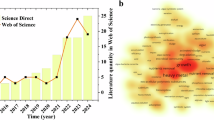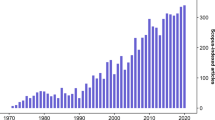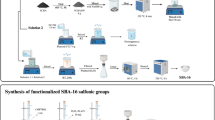Abstract
THE principal surface-active constituent of most modern commercial synthetic detergents is a mixture of sodium alkylbenzene sulphonates (ABS) derived from a highly branched, low-molecular-weight propylene polymer and benzene. This material is not completely destroyed in typical activated sludge sewage treatment plants. Thus, some of it finds its way into rivers, lakes, ponds, etc., where unsightly foaming occasionally results. There is widespread belief that only part of the ABS mixture is biodegradable, and that those isomers which survive normal sewage treatment are refractory to further biological action. Contrary to this belief, I have found that essentially all isomers are truly degradable, though the rate of degradation of some of the more resistant components is, as expected, quite slow.
This is a preview of subscription content, access via your institution
Access options
Subscribe to this journal
Receive 51 print issues and online access
$199.00 per year
only $3.90 per issue
Buy this article
- Purchase on SpringerLink
- Instant access to full article PDF
Prices may be subject to local taxes which are calculated during checkout
Similar content being viewed by others
References
House, R., and Fries, B. A., Sewage and Indust. Wastes, 28, 492 (1956).
Robeck, G. G., Cohen, J. M., Sayers, W. T., and Woodward, R. L., J. Water Poll. Control Fed., 35, 1225 (1963).
Sharman, S. H., and Kyriacou, D., meeting Amer. Water Works Assoc., Santa Monica, California (October 26, 1962).
Author information
Authors and Affiliations
Rights and permissions
About this article
Cite this article
SHARMAN, S. Extensive Biodegradation of Synthetic Detergents. Nature 201, 704–705 (1964). https://doi.org/10.1038/201704a0
Issue date:
DOI: https://doi.org/10.1038/201704a0
This article is cited by
-
Biodegradability of alkylbenzene sulfonates
Journal of the American Oil Chemists' Society (1989)
-
An evaluation of a model ecosystem with DDT
Archives of Environmental Contamination and Toxicology (1980)



